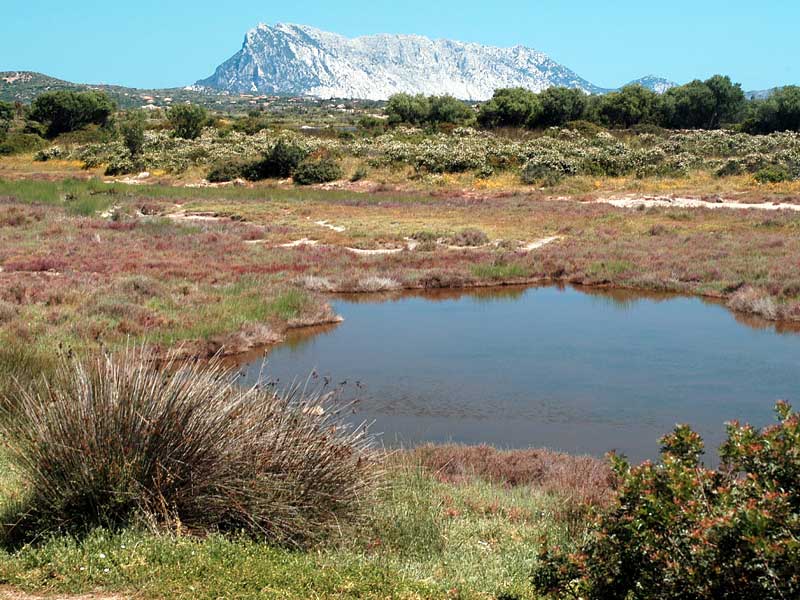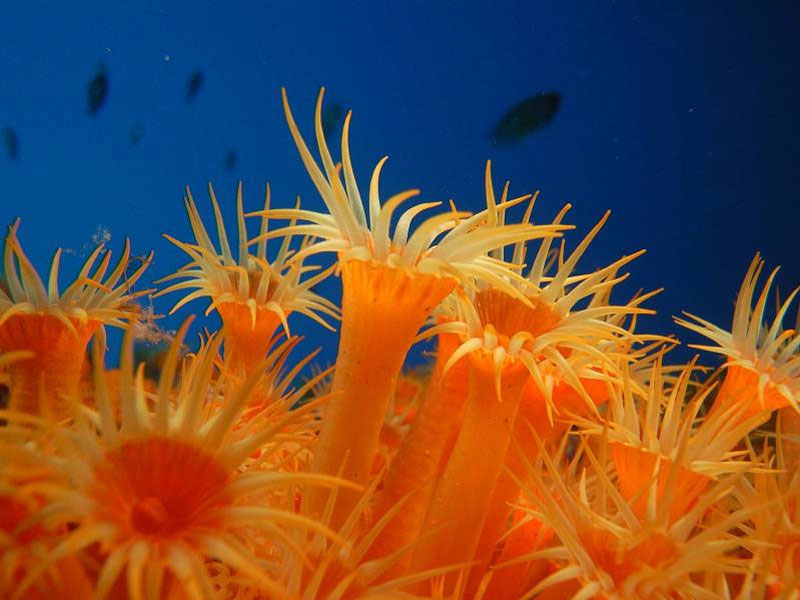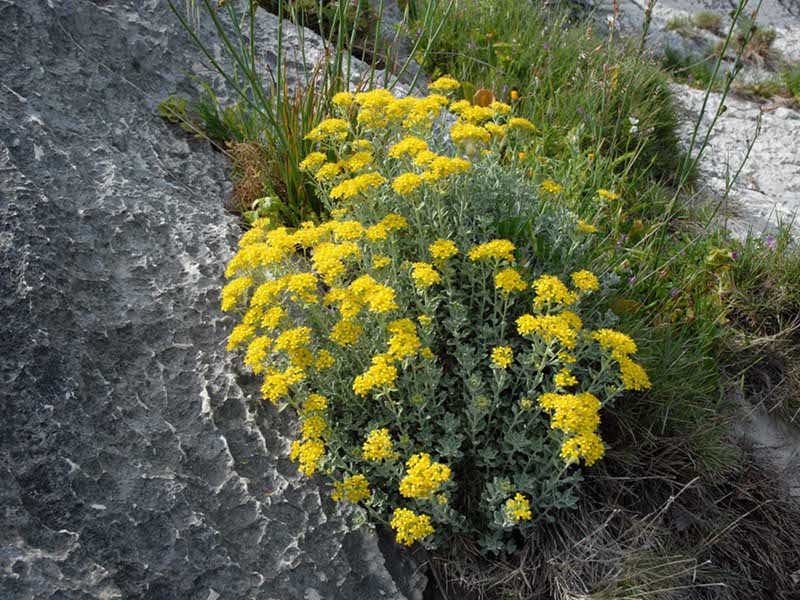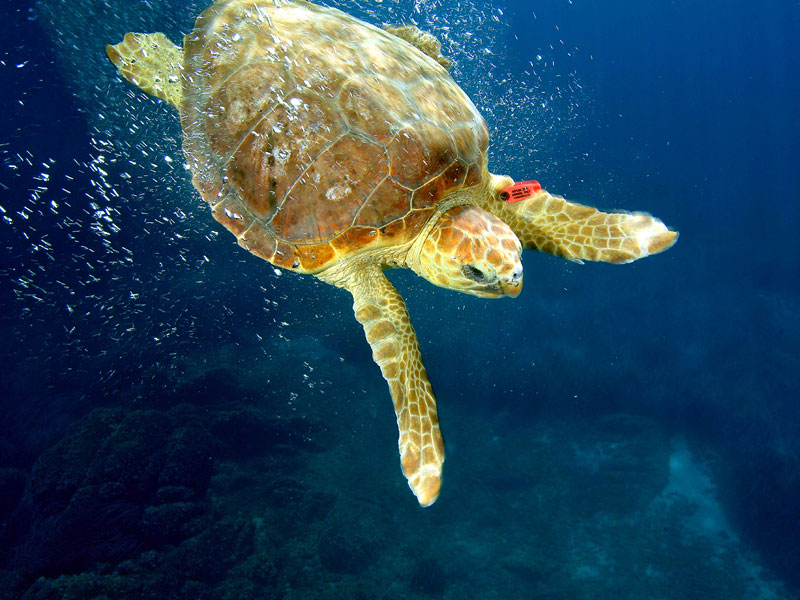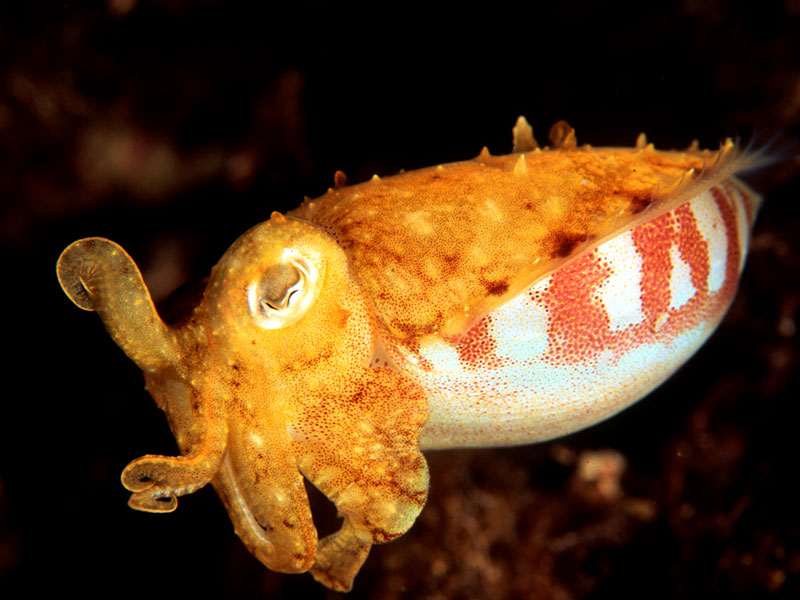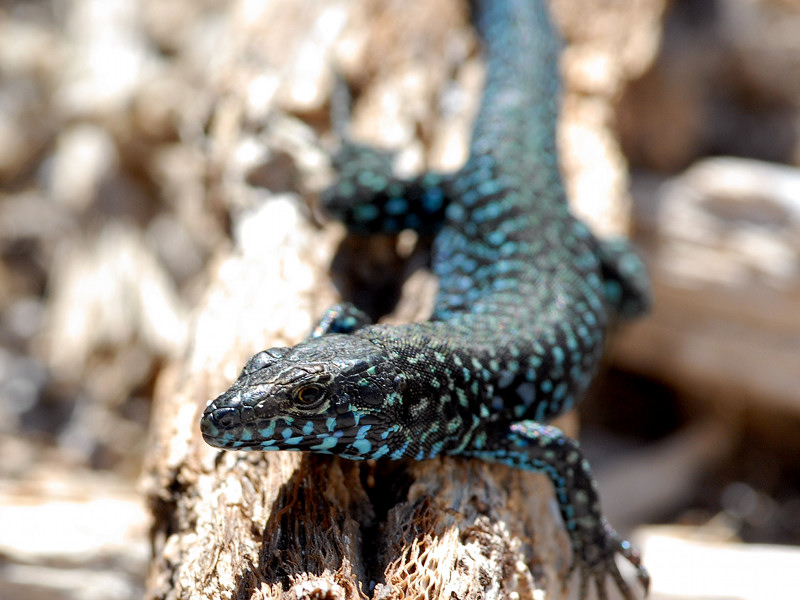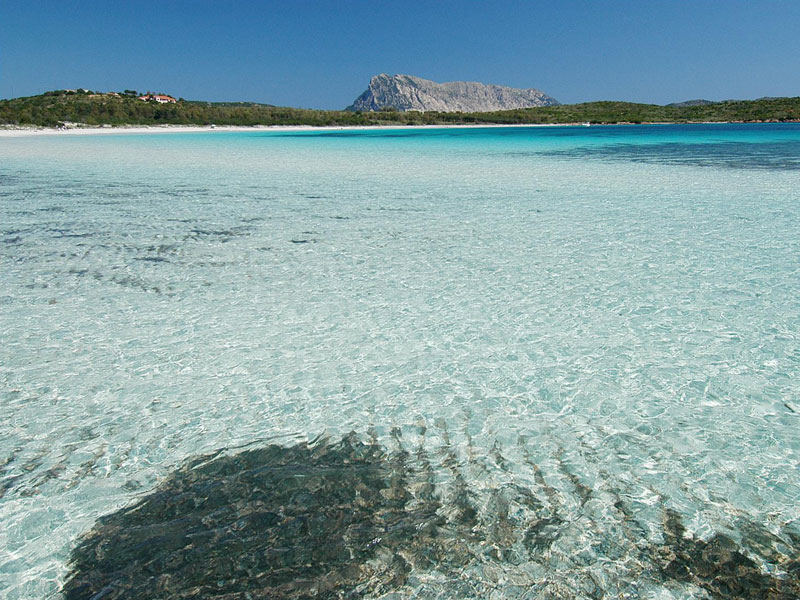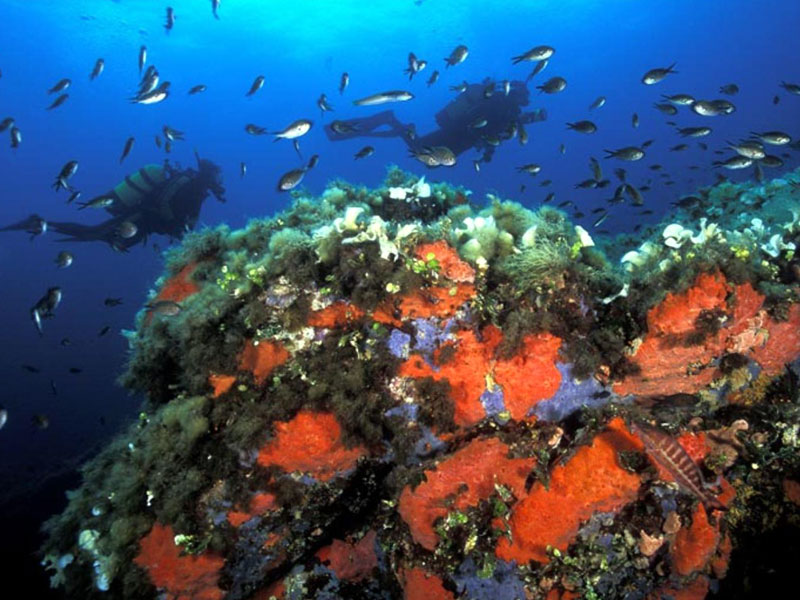Area Marina Protetta Tavolara
Punta Coda Cavallo
www.amptavolara.itProtected Area
Identity Card
- Tavolara - Punta Coda Cavallo Marine Protected Area:
- Sea Surface Area: 15'357.00 ha
- Regions: Sardegna
- Provinces: Sassari
- Municipalities: Loiri Porto San Paolo, Olbia, San Teodoro
- Establishment Measures: DMAMB 12/12/1997 - DM 28/11/01
- PA Official List: EUAP0952
- Further managed Protected Areas:
- SIC Isole Tavolara, Molara e Molarotto
The Marine Area
The Marine Protected Area of Tavolara Punta Coda Cavallo, established
in 1997 with a decree of the Department of the Environment, covers
about 15,000 hectares of sea and the coastal territories of the
Municipalities of Olbia, Loiri Porto S.Paolo, and San Teodoro. It is
managed by a Consortium existing among three Municipalities, which has
received the EMAS certification.
Its naturalistic features and
enchanting landscape, as well as its historical events, make it one of
the most interesting sites of the Mediterranean. For this reason,
according to its establishment aims, the Marine Protected Area suggests
to training agencies some Environmental Education activities, studied
to offer an experience rich in spurs and attractions. The important and
useful collaboration with I.CI.MAR (Istituto Civiltà del Mare) of S.
Teodoro offers the opportunity to visit the Museum of the Sea housing a
small but interesting exhibit of archaeological finds and telling the
tale of this patch of Gallura.
The Geology of the Protected Area
Diversified from a geomorphological
point of view, the territory of the area is characterized by the
presence of pink granites belonging to the granite pluton of Gallura,
by quartziferous-feldspathic beaches, and by calcareous-dolomitic
mountains of the Island of Tavolara. The latter rest on a granite
basement made of granular red pegmatite with a surface completely
leveled by the erosion of atmospheric agents, which took place about
225 million years ago. The coastal stretch is characterized by small
and isolated bays alternating with very long falcate beaches, among
high rocky promontories. The beach bars with their characteristic white
and rose-colored sands, face a crystal-like sea shading from turquoise
to indigo to blue. On the coasts overlooking the marine area high dunes
and dune depressions alternate and the active riverbeds of Padrongiano,
rio Lutturai, and rio San Teodoro, together with the channels leading
to the open sea, contribute to the formation of ponds and coastal
lagoons.
This extraordinary landscape is completed by the beach of
Capo Ceraso, the beaches and lagoons of Porto Istana, Ponto della
Taverna, and Cala Brandinchi, the beach and the delta lagoons of Porto
San Paolo, the beach of Cinta and the lagoon of San Teodoro, spaced
with Capo Ceraso, Punta Molara, Punta Coda Cavallo and with further
granite promontories.
Also Molara and the several minor islands present the characteristic
morphology of the granite rocks rich in isolated blocks which have been
eroded and taken on different shapes.
Flora
The area has a great value for the variety of its environments and the
natural importance of the whole area, as well as for its fauna and
vegetation. A series of habitats house various endemic species (34 in
the archipelago) and high Mediterranean maquis.
Chestnut trees,
ilex trees, wild olive, and juniper populate Molara: they are nourished
by the water coming from many springs. The holm, looking bare in the
distance, is on the contrary an unexpected nature sanctuary. High
plants also characterize the summit of Tavolara: besides the species
you can find in Molara, here you will find also the Montpelier maple.
In ancient times the arboreal covering, without a doubt much more
extended, were seriously impoverished to favor the production of lime.
This process is witnessed by the kilns present in the island and by the
artificial trails used to transport timber.
Behind the beaches and the dunes swept by wind and salt deposits, wild
olives, lentisk, tamarisk, and various species of rock rose.
The vegetational formations able to develop on brackish soils colonize
the several wetlands; among the main species there is the Glasswort.
The riparian vegetation, mainly consisting of Common Reed (Phragmites),
is widespread not only along the watercourses, but also in the small
marshes near the mouth and in the wetlands characterized by a
significant presence of freshwater.
Always in front of the
archipelago, the rocky areas are populated by floristic species able to
resist dehydration: rock samphire and various species of Limonium (among which the endemic species Limonium hermaeum).
On the rocky promontories, the dominating vegetational formations are
the "steppe-garigue" and "Mediterranean maquis", differently
distributed according to the different degree of human presence.
The high maquis, with a very rich undergrowth, includes a series of
heterogeneous formations which can be usually determined on the basis
of locally dominating species. Among the others, the formations
consisting of Phoenician juniper (Juniperus phoenicea)
are of great ecological and botanic value and can be found at the top
of the promontory of Punta Coda Cavallo; the peculiar formations of Calicotome villosa and myrtle, tree heath and strawberry tree, in particular spreading in
Punta Molara, can be found in the nature reserve established by the
Municipality of San Teodoro and equipped with trails and itineraries
giving the opportunity to visit a large area and very thick woodland.
Fauna
Also the fauna populating the area is of great interest. The species of
vertebrates represent almost the 50% of all the species of vertebrates
living in Sardinia. Among amphibians, reptiles, and birds there are
several species protected by regional laws and international agreements.
Moreover, the area is very important for the great variety of avifauna.
In the marine area, recent researches have highlighted the presence of
152 bird species, about the 80% of the species recorded in the whole
Sardinia, out of which 69 are nesting species. The coastal lagoons of
the area have always been the ideal destination for several species of
avifauna characterizing the wetlands, both resident and migratory
species. Besides the famous population of Pink Flamingos living in San
Teodoro lagoon, there are also Grey Herons, Little Egrets, Little
Terns, Mallards, etc.
Among the species living in the woodlands along the coasts and probably
reproducing in the area, we can mention the Marsh Harrier, the
Montagu's Harrier, the Peregrine, and the Great Spotted Woodpecker.
Finally, a great number of sea birds find particularly suitable
habitats among the most solitary rocky coasts of islands, holms, and
cliffs. In the Island of Tavolara, 32 species of sea birds nest (7 of
which endangered), 25 in Molara (3 of which endangered), 7 in Molarotto
(6 of which endangered). Among the most widespread species there are
the Shearwater and the Shag (a variety of cormorants), whose population
is one of the most important of the whole Mediterranean basin. Diving
under the perches, you can observe the Shags diving without breathing.
The high rocky cliffs of the Island of Tavolara can be the hunting
territory of the Golden Eagle, and you can also sight some specimens of
Bearded Vulture.
Among the ten species of mammals present in the area, the Brown Hare is
the main endemic species, even if among the local subspecies there are
the fox, wild cat, pine marten, and weasel, the only carnivorous
animals present in the area.
The Sea
The marine area of Tavolara - Punta Coda Cavallo approximately includes
80 km of coasts which are geologically and morphologically varied and
different. As the terrestrial ecosystem, also the coastal underwater
system consists of a continuous series of different vegetal and animal
associations (biocenosis). In the sea, several of the most significant
biological and ecological phenomena can be found in the coastal areas.
Where the light energy penetrates up to the bottom, nourishment
substances are abundant. All the most important food chains begin with
the "primary production" carried out by the photosynthetic activity of
the vegetation.
On the sandy seabed and at a maximum depth of 30-35m, the Posidonia oceanica bed represents a rich and articulated ecosystem, while the underwater
silhouettes of the granite steep slopes and carbonate cliffs, together
with isolated reliefs (several "shallows" are present in the protected
area), form other ecosystems characterized by peculiar communities of
flora and fauna of the rocky substrata.
Posidonia oceanica (higher plant which adapted afterwards to live in the sea) plays an
essential role in the natural economy of the coastal system. As a
matter of fact, the Posidonia bed helps in supporting the sea food
chain of the coast. At greater depths we find the "precoralligenous"
and "coralligenous" populations of biodetrital seabed (consisting of
fragments of animal and vegetal origin). The various species present,
among which the brown alga Cystoseira zosteroides, increase
the biodiversity and complexity of the system, playing an essential
role as nursery for several varieties of sea organisms.
The
underwater landscape of the hard seabed present in the whole area is of
great nature and aesthetic value, also thanks to the extraordinary
transparency of water. Here, at a maximum of 10m of depth,
photophilous algae and an encrusting fauna - or, in any case, fauna
which is tenaciously fixed to the substratum - grow. At a maximum of 25m of depth, the precoralligenous biocenosis and those of the vegetal
organisms preferring the dim light areas (sciophilous algae) grow: this
is the realm of Bryozoan.
Finally, at a maximum of 40m of depth, the coralligenous of the
coastal rock lower horizon develops: here the largest and most
spectacular gorgonians and other multicolored coelenterate corals live.


